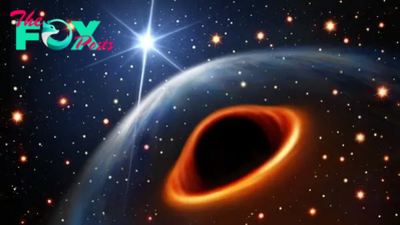Science
Researchers solve mystery of inexplicably dense galaxy at the heart of perfect 'Einstein ring' snapped by James Webb telescope
Researchers may have solved the mystery of why a distant galaxy surrounded by an eerily perfect "Einstein ring" is denser than it should be: The hefty galaxy, which was discovered by the James Webb Space Telescope (JWST), is being compressed by a massive halo of dark matter.
Einstein rings, which were first predicted by Albert Einstein's theory of relativity, are luminous halos created by a phenomenon called gravitational lensing, which occurs when light from a distant object is warped around a "foreground object" located directly between the distant object and the observer. The light looks as if it is being bent by gravity. But in reality, the light is Traveling in a straight line through space-time that has been warped by the foreground object's hefty mass.
In September 2023, astronomers discovered an Einstein ring, named JWST-ER1, in data collected by JWST. The luminous structure has two parts: JWST-ER1r, which is the actual luminous ring made of light from the distant galaxy; and JWST-ER1g, which is the foreground object that lenses the distant galaxy's light.
JWST-ER1r is around 21 billion light-years from Earth, making it the most distant gravitationally lensed object ever discovered; after adjusting for the universe's expansion rate, researchers estimated that the galaxy was born about 10.3 billion years ago, or around 3.4 billion years after the Big Bang.
Related: Dark matter's secret identity could be hiding in distorted 'Einstein rings'
At the time of this discovery, researchers noticed that the lensing object, JWST-ER1g, was unusually dense. The size and shape of the ring surrounding this galaxy suggested that it had a mass of around 650 billion suns, which is very high for a galaxy of its size. A large amount of this mass is likely dark matter — a Mysterious form of matter that does not interact with light but makes up around 85% of all matter in the universe. But even when this Mysterious substance is accounted for, the galaxy still seems too massive for its size.
"Additional mass is needed to explain the lensing results," the researchers wrote in a paper at the time. However, they provided no explanation for what this "additional mass" could be.
-

 Science11h ago
Science11h agoLake Kivu: The ticking time bomb that could one day explode and unleash a massive, deadly gas cloud
-

 Science23h ago
Science23h ago'Upwelling' deep in the mantle triggered magnitude 6.8 Morocco earthquake
-

 Science23h ago
Science23h agoThere's a 2nd El Niño — and scientists just figured out how it works
-

 Science1d ago
Science1d ago'Failed' microcontinent found hiding beneath Greenland and Canada
-

 Science1d ago
Science1d agoUltra-rare black hole found hiding in the center of the Milky Way
-

 Science1d ago
Science1d agoBoeing Starliner astronauts remain stuck on International Space Station with no set return date, NASA announces
-

 Science1d ago
Science1d agoWorld's loneliest tree species can't reproduce without a mate. So AI is looking for one hidden in the forests of South Africa.
-

 Science2d ago
Science2d ago'I'm as happy as I've ever been in my life': Why some people feel happiness near death



















